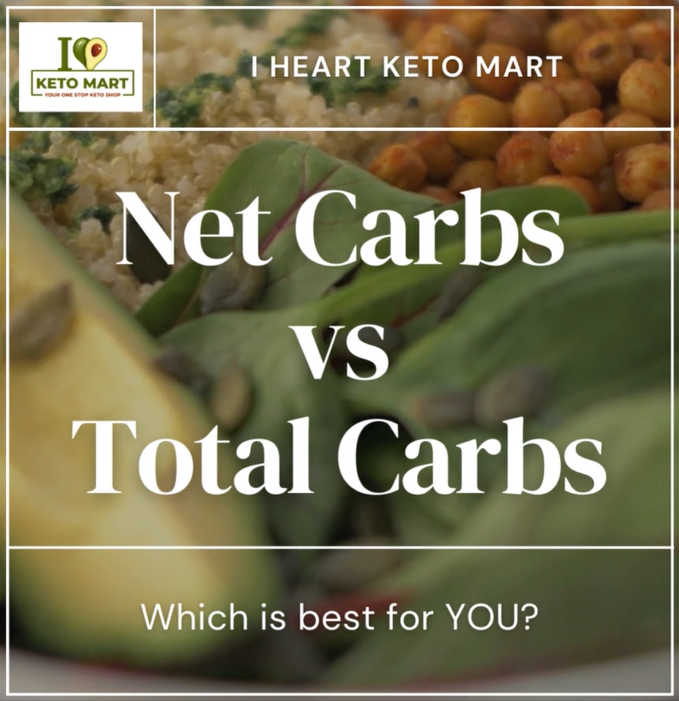Total and Net Carbs

The difference between total and net carbs is a point of contention in the realm of the ketogenic diet, despite the fact that net carb totals are the more common method of calculation of carbohydrate intake for people who are following a ketogenic diet. I mean, it’s definitely more permissive to calculate net carbs, but it may not be as conducive to reaching your health goals. Let’s dive deeper into the distinctions between the two and provide readers with a deeper understanding of the most important distinctions that need to be made in order to attain the best possible health results from following a ketogenic diet.
What are Carbohydrates Anyway?
Carbohydrates, which are the primary source of energy for the majority of people in the world (sugar burners), may be found in a wide variety of meals, ranging from grains and noodles to fruits and vegetables. The human brain actually prefers ketones as its power source, and can use 80% ketones to 20% glucose for fuel. The total carbs in a food are the sum of all of the individual types of carbohydrates included in that dish. A food’s total fiber content is subtracted from its total carbohydrate content to determine its net carbohydrate content. The component of food that is digested but not absorbed by the body is known as dietary fiber, and it serves a number of important and beneficial roles. ** Sugar alcohols may also be subtracted, as they are also not metabolized by the body.
The ketogenic diet is a diet of very low carbohydrate consumption (typically less than 20 net carbs or 20 – 50 total carbs). A person following the ketogenic diet limits the amount of carbohydrates they consume in order to reach a metabolic state known as ketosis (this limit varies from person to person based on bio-individuality). This is a state in which the body primarily uses fat that it has stored as its major source of energy. Because dietary fiber is not digestible, it can be subtracted from the total carbohydrate content. This allows people who are following a ketogenic diet to more accurately determine the quantity of carbohydrates that will have an effect on ketosis and prevent them from falling out of ketosis.
Pros and Cons of Total and Net Carbs

When utilizing net carbs as a measurement of carbohydrates, the calories that come from dietary fiber are not included when calculating “net” carbohydrates. This can be somewhat deceiving because the calories from dietary fiber are still absorbed and utilized by the body, but in a much smaller amount compared to the utilization of calories from other carbs. Calories are not focused on as much as percentages of macros, but calories do count.
On the flip side, the total carb count does not take into consideration all of the carbs that may or may not have an effect on the state of ketosis. For instance, sugar alcohols, which are frequently used to replace sugar in low-carb foods and beverages, can have a modest effect on blood sugar levels and should also be kept in mind when adhering to a ketogenic diet. This is something that needs to be taken into consideration.
Total and Net Carbs with Processed Foods
If you eat processed foods, BE CAREFUL!

I stay away from anything with total carbs over 20, even if the net carbs are low. The reason is, food manufacturers are sneaky and they are adding tons of resistant fibers simply to subtract from the total carbs that are loaded in their newly created “keto-friendly” foods. I was unaware of the effect this would have on my weight loss and stuck with the net carb equation when all of the keto friendly foods hit the grocery aisles: Total Carbs – fiber – sugar alcohols – net carbs, but when I was eating dirty and choosing too many processed foods, the weight loss plateaued and I could feel inflammation flare up in my body again. Cravings started to stir when I added in processed foods as well.
Bio-individuality
Due to bio-individuality, some can stick with net carbs no matter the product, and some will be more effective with achieving the benefits of keto by only using net carbs when it comes to whole foods. The choice is always yours! Use a Keto-Mojo blood glucose and ketone meter to test yourself and see how any foods affect your blood sugar levels and ketone levels. This is the BEST way to know how any new “keto-friendly” foods will truly affect you.
If you hit a plateau with net carbs, you can always try total carbs for a week or two to see if that shakes things up. Typically, the processed food chemicals and all the added ingredients that help products look “keto-friendly” are working against the state of ketosis and stop or lessen the positive health benefits of eating a ketogenic way of life. Whole foods are best, but even an 80% – 20% clean to dirty is a great goal.